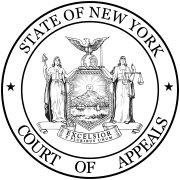Negligence is a failure to exercise appropriate and/or ethical ruled care expected to be exercised amongst specified circumstances. The area of tort law known as negligence involves harm caused by failing to act as a form of carelessness possibly with extenuating circumstances. The core concept of negligence is that people should exercise reasonable care in their actions, by taking account of the potential harm that they might foreseeably cause to other people or property.
Product liability is the area of law in which manufacturers, distributors, suppliers, retailers, and others who make products available to the public are held responsible for the injuries those products cause. Although the word "product" has broad connotations, product liability as an area of law is traditionally limited to products in the form of tangible personal property.

Donoghue v Stevenson [1932] AC 562 was a landmark court decision in Scots delict law and English tort law by the House of Lords. It laid the foundation of the modern law of negligence in common law jurisdictions worldwide, as well as in Scotland, establishing general principles of the duty of care.
The doctrine of privity of contract is a common law principle which provides that a contract cannot confer rights or impose obligations upon anyone who is not a party to that contract. It is related to, but distinct from, the doctrine of consideration, according to which a promise is legally enforceable only if valid consideration has been provided for it, and a plaintiff is legally entitled to enforce such a promise only if they are a promisee from whom the consideration has moved.

Palsgraf v. Long Island Railroad Co., 248 N.Y. 339, 162 N.E. 99 (1928), is a leading case in American tort law on the question of liability to an unforeseeable plaintiff. The case was heard by the New York Court of Appeals, the highest state court in New York; its opinion was written by Chief Judge Benjamin Cardozo, a leading figure in the development of American common law and later a United States Supreme Court justice.
This article addresses torts in United States law. As such, it covers primarily common law. Moreover, it provides general rules, as individual states all have separate civil codes. There are three general categories of torts: intentional torts, negligence, and strict liability torts.

Hedley Byrne & Co Ltd v Heller & Partners Ltd [1964] AC 465 is an English tort law case on economic loss in English tort law resulting from a negligent misstatement. Prior to the decision, the notion that a party may owe another a duty of care for statements made in reliance had been rejected, with the only remedy for such losses being in contract law. The House of Lords overruled the previous position, in recognising liability for pure economic loss not arising from a contractual relationship, applying to commercial negligence the principle of "assumption of responsibility".

In tort law, a duty of care is a legal obligation that is imposed on an individual, requiring adherence to a standard of reasonable care to avoid careless acts that could foreseeably harm others, and lead to claim in negligence. It is the first element that must be established to proceed with an action in negligence. The claimant must be able to show a duty of care imposed by law that the defendant has breached. In turn, breaching a duty may subject an individual to liability. The duty of care may be imposed by operation of law between individuals who have no current direct relationship but eventually become related in some manner, as defined by common law.

Winterbottom v Wright (1842) 10 M&W 109 was an important case in English common law responsible for constraining the law's 19th-century stance on negligence.
In English tort law, an individual may owe a duty of care to another, in order to ensure that they do not suffer any unreasonable harm or loss. If such a duty is found to be breached, a legal liability will be imposed upon the tortfeasor to compensate the victim for any losses they incur. The idea of individuals owing strangers a duty of care – where beforehand such duties were only found from contractual arrangements – developed at common law, throughout the 20th century. The doctrine was significantly developed in the case of Donoghue v Stevenson, where a woman succeeded in establishing a manufacturer of ginger beer owed her a duty of care, where it had been negligently produced. Following this, the duty concept has expanded into a coherent judicial test, which must be satisfied in order to claim in negligence.

Ultramares Corporation v. Touche, 174 N.E. 441 (1932) is a US tort law case regarding negligent misstatement, decided by Cardozo, C.J. It contained the now famous line on "floodgates" that the law should not admit "to a liability in an indeterminate amount for an indeterminate time to an indeterminate class."

Grant v Australian Knitting Mills, is a landmark case in consumer and negligence law from 1935, holding that where a manufacturer knows that a consumer may be injured if the manufacturer does not take reasonable care, the manufacturer owes a duty to the consumer to take that reasonable care. It continues to be cited as an authority in legal cases, and used as an example for students studying law.

Candler v Crane, Christmas & Co [1951] 2 KB 164 is an English tort law case on negligent misstatement.
Escola v. Coca-Cola Bottling Co., 24 Cal.2d 453, 150 P.2d 436 (1944), was a decision of the Supreme Court of California involving an injury caused by an exploding bottle of Coca-Cola. It was an important case in the development of the common law of product liability in the United States, not so much for the actual majority opinion, but for the concurring opinion of California Supreme Court justice Roger Traynor.

Friend v. Childs Dining Hall Co., 231 Mass. 65, 120 N.E. 407 (1918), is part of a progression of cases that influenced the products liability synthesis that emerged in the 1930s. These cases influenced Judge Cardozo's argument in MacPherson v. Buick Motor Co. that a person could be liable for a defective product to someone other than the immediate purchaser. This created the law of product liability.

Chysky v. Drake Bros. Co., 235 N.Y. 468, 139 N.E. 576 (1922), was a products liability case before the New York Court of Appeals. The Court held that a plaintiff cannot recover from a defendant based on implied warranty when she does not have contractual privity with him; thus, a plaintiff cannot recover from a defendant who sold her employer food unfit for consumption, because the defendant's implied warranty extended only to the employer.

Thomas v. Winchester, 6 N.Y. 397 (1852), which established the "imminent danger to human life" doctrine, was at the head of the cases in assaulting the protective wall of privity in the tort field. Subsequent examples include: MacPherson v. Buick Motor Co., Goldberg v. Kollsman Instrument Corp., and finally, Judge Jones's landmark holding in Codling v. Paglia, in which the Court demolished what was left of the privity barrier in tort cases by adopting the doctrine of strict products liability.
Loop v. Litchfield 42 N. Y. 351 (1870) was a part of the historic line of cases holding that the privity requirement barred a products liability action unless the product in question was "inherently dangerous."

Devlin v. Smith, 89 N.Y. 470 (1882) was a seminal case decided by the New York Court of Appeals in the area of product liability law.

Dutton v Bognor Regis Urban District Council [1972] 1 QB 373 is an English contract law and English tort law case concerning defective premises and the limits of contract damages. It was disapproved by the House of Lords in Murphy v Brentwood DC and is now bad law except in Canada and New Zealand.









